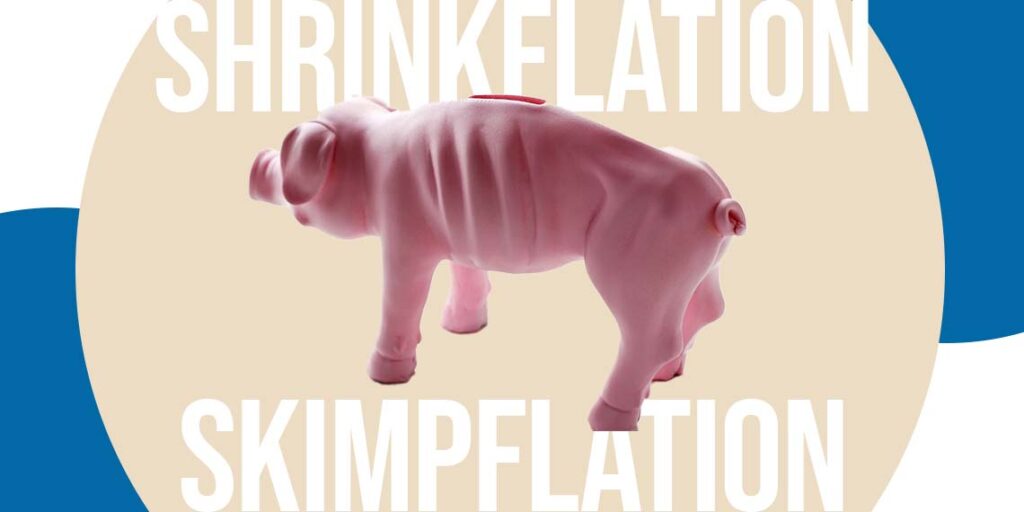Most of us have grown up with upper-aged adults hyping up over high prices of goods that were cheaper before. We all used to be in awe of it, until one day, we learnt about inflation and how things work. But what if I told you that two more head-scratching terms are similar to, or worse than, inflation? To blow the lid off, they’re none other than Shrinkflation and Stagflation. After learning these terms, you’ll realize that inflation doesn’t hold a candle to these phenomena.
Shrinkflation
Shrinkflation is a phenomenon in which the size of a product decreases, but the price remains the same or increases. This can occur for a variety of reasons, such as rising production costs or changes in consumer demand. Some examples of shrinkflation include smaller bags of chips or candy, smaller containers of household products, or smaller servings of food at restaurants. Shrinkflation can be frustrating for consumers, as they feel like they are getting less value for their money. It can also be difficult to detect, as the change in size may be subtle and not immediately apparent to consumers.
Negative impact of Shrinkflation:
Shrinkflation can have a number of harmful effects on consumers and businesses. Some potential negative impacts of shrinkflation include:
- Reduced purchasing power: When products shrink in size but the price remains the same, consumers may feel like they are getting less value for their money. This can lead to a decrease in purchasing power, as consumers may be unable to afford as much as they could before.
- Decreased consumer confidence: Shrinkflation can erode consumer confidence, as people may feel like they are being taken advantage of by companies that are reducing the size of their products while keeping the price the same.
- Decreased competition: Shrinkflation can make it more difficult for new businesses to enter the market, as they may not be able to compete with established companies that are able to absorb the costs of shrinkflation.
- Decreased innovation: Companies may be less likely to invest in research and development if they are focused on cost-cutting measures such as shrinkflation. This can lead to a decrease in innovation and progress in the industry.
- Negative impact on small businesses: Small businesses may be more vulnerable to the effects of shrinkflation, as they may not have the same resources as larger companies to absorb the costs of rising production expenses. This can lead to decreased profits and potentially even bankruptcy for small businesses.
Stagflation
Stagflation is a situation in which an economy experiences high inflation, stagnant economic growth, and high unemployment. This can be a challenging economic environment for businesses and individuals, as the combination of rising prices and limited economic opportunities can make it difficult to maintain financial stability. Stagflation can be caused by a variety of factors, including supply shocks, high levels of government debt, and low levels of aggregate demand. It can also be difficult to address, as traditional economic policies such as lowering interest rates or increasing government spending may not be effective in addressing both the high inflation and low growth that are characteristic of stagflation.
Negative impact of stagflation
Stagflation can have a number of harmful effects on an economy and the people who live in it. Some potential negative impacts of stagflation include:
- Decreased economic growth: Stagnant economic growth can lead to reduced income and job opportunities, making it more difficult for individuals and businesses to thrive.
- High unemployment: High inflation combined with stagnant economic growth can lead to high unemployment, as businesses may be unwilling or unable to hire new workers in an uncertain economic environment.
- Decreased purchasing power: High inflation can erode the purchasing power of consumers, as the cost of goods and services increases faster than their incomes. This can make it difficult for people to afford the things they need and may lead to an increase in poverty rates.
- Decreased business investment: Businesses may be hesitant to invest in new projects or expansion in an environment of high inflation and low economic growth. This can lead to a slowdown in innovation and progress.
- Negative impact on small businesses: Small businesses may be particularly vulnerable to the negative effects of stagflation, as they often have fewer resources to weather economic downturns and may be more reliant on borrowing to finance their operations.
One needs to be enlightened about such terminologies and how they impact the economy and its purchasing power.
